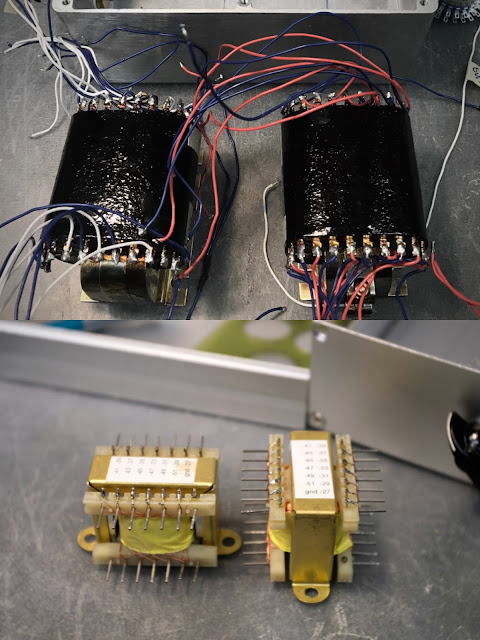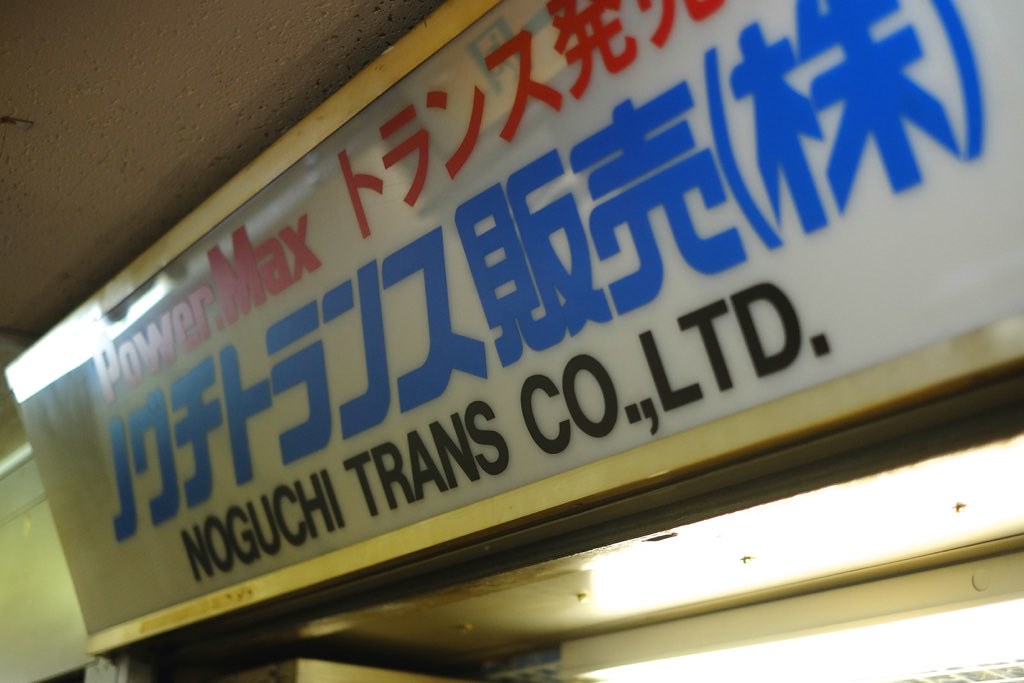Showing posts with label GTrans. Show all posts
Showing posts with label GTrans. Show all posts
Saturday, March 8, 2025
Wednesday, May 22, 2024
Shielded Finemet FM-MCT1 MC Step Up Transformers
It's been almost a year since my favorable review of this Finemet MC step up transformer. Overall, it has given me great musical pleasure! However, when tasked to amplify MC phono cartridges with lower output than a typical Denon DL103, in particular the Ortofon SPU and Fidelity Research FR1 MkII, hum could be intrusive in softer passages of classical music, especially when not carefully sited away from motors and power supply transformers.
As I had suspected in my initial review, the FM-MCT1 wasn't as well shielded as the Hashimoto HM7, Tamura TKS83, Altec 4722 and other vintage MC SUTs in my collection.😔 Now, I had no recourse but to compromise my aesthetic preference for an open chassis in favor of an enclosure to provide additional shielding.
Monday, April 8, 2024
Friday, October 6, 2023
JE Labs Choke-Capacitance Coupled SE2A3 amp
 |
| Canon P + Canon 50mm f1.8 LTM Foma 100 in Rodinal |
Inspired by my plate choke-loaded 76 line stage preamp adventures, I was curious how a similar driver circuit configuration would sound in an SE2A3 amp. So I pulled out my Radiotron Designer's Handbook, 3rd Edition to gain a better understanding of choke-capacitance coupling (aka plate choke loading) vis-à-vis resistance coupling.
Below are highlights of relevant information I gathered.
Friday, July 21, 2023
Tuesday, September 11, 2018
Wednesday, October 11, 2017
JE Labs Simple 46
I've been hoarding type 46 power tubes gathered from radio shows I attended with my buddy Chong in the late 90s. Building an SE 46 amp was in my to do list when I packed up for Manila in '08. But things got in the way. Finally, after a round trip across the Pacific, the amp has come into fruition.
 |
| 46 tube base diagram |
 |
| chassis is punched out and ready for painting |
It's been over 20 years since the Simple 45/2A3 was uploaded to the now defunct DIY section of the old Angela Instruments website. So I wanted to reprise that old-school topology with a twist. I considered retaining the octal base and using a grid capped 6F5 or a UX6 based + grid capped type 75, as a tribute to Asano-san. 🙏
However, since I am in loctal mode, I settled on the 7B4 hi-mu triode which is more in unison with the simple theme. The 7B4 is readily available NOS and can be had for less than $5 each from tube dealers. Tube rollers take note, even if loctal tubes are boxed/labelled RCA, Tung Sol, Raytheon, etc. most of them came from the Sylvannia factory in Emporium PA. 😞
 |
| under the hood |
!!!WARNING!!!
The voltages found in this circuit can be lethal! Build at your own risk!!!
 |
| JEL Simple 46 schematic |
Adjust the dropping resistor* (use at least a 10W) so that the operating point for the 46 tube is as close as possible to the tube manual specified 250V max. plate voltage x 22 ma. current draw = 5.5W. Ideally, the 46 should see 285 volts at the plate - 35V in the cathode = 250V. As shown in the schematic, I am still running my output tubes about 8% over because I was anxious to listen and got lazy to lower the B+ further. 😎
The big surprise was, subjectively, the triode-wired 46 sounds more powerful and authoritative especially in the lower register than the 45. It sounds like the union of virtues between the dark and mythical 10/VT25 + the refreshing airiness of a 45. I've been listening to this amp for over three months and haven't had the itch to switch on my other amps. 😄
CODA
 |
| Left to Right - Globe 46, ST 46, ST 45 and 2A3 |
Globe tubes look really cool and usually sound more lush than their ST counterparts. I personally prefer a Globe 45 over the later ST glass bottled samples. However in the case of the 46, the difference is not as apparent and close to negligible to my ears, So save your $$s and do something less nerdy, like going out on a date. 😉
Addendum
I received this email recently from a seasoned DIYer/audio enthusiast known in various audio forums as Salectric.
"I just saw your blog post about your Simple 46 amp and I read the question someone posed in the Comment section about a suitable power transformer. I actually had Edcor build a custom PT for my 46 amps and the voltages worked out perfectly so I recommend it to anyone wanting to build a 46. I don't know if the particular unit is listed on their website but it should be available through the part number which is the Edcor XPWR 258-120.
The B+ windings have two secondary voltages. It is 345-235-0-235-345 @ 300ma. The purpose of the two voltage taps is to let the transformer function for either choke input or cap input. The lower voltage windings with a 5U4GB and cap input filter give a roughly 290v B+, and so do the higher voltage windings with a 5R4GY and choke input. With a little loss in the OPT and a 32v bias, the 46 has almost exactly 250v across it. There is also a 5V@3A and 6.3VCT.
I ordered it this way because I wanted to compare choke input and cap input with as close to exactly the same conditions as possible. (I tried a 5U4GB with the choke input as well as cap input just to be as consistent as possible.) The best sounding setup was the choke input with 5R4GY so that's how mine is set up. The Edcor is super-quiet. No mechanical buzzing at all."
Friday, July 28, 2017
Noguchi Finemet: FM-3WS-H + FM-6WS output transformers
This was the last extensive testing and listening session I did in the attic before we moved back to the states. I misplaced some data and just recovered them recently. So as promised in a previous blog entry, here's the write-up on the two entry-level SE Finemet OPTs from Noguchi.
WARNING
These are bonsai-sized output transformers. If HUGE iron + HIGH inductance and thumping bass frequencies is your idea of high-fidelity you should STOP 🛑 here!😉However, if the finesse and realism a WE/Altec 755A can provide within its 70-13 kHz bandwidth is your idea of a GREAT time, please proceed!😊
Noguchi FM-3WS-H
 |
| Noguchi FM-3WS-H + Tamura F7004 |
David vs. Goliath - indeed, the FM-3WS-H is tiny. I had to mount it on a perf board so that it wouldn't fall from the square mounting hole left by the Tamura F7004 ;)
Wednesday, February 1, 2017
Budget SE OPTs - Edcor and Noguchi
All output transformers were tested in the je2a3 amp using the same procedure as I did in the Hammond 125ESE many moons ago. Listening sessions were done through the same amp driving a single Altec 2-way speaker system.
Thursday, January 12, 2017
Subscribe to:
Comments (Atom)














